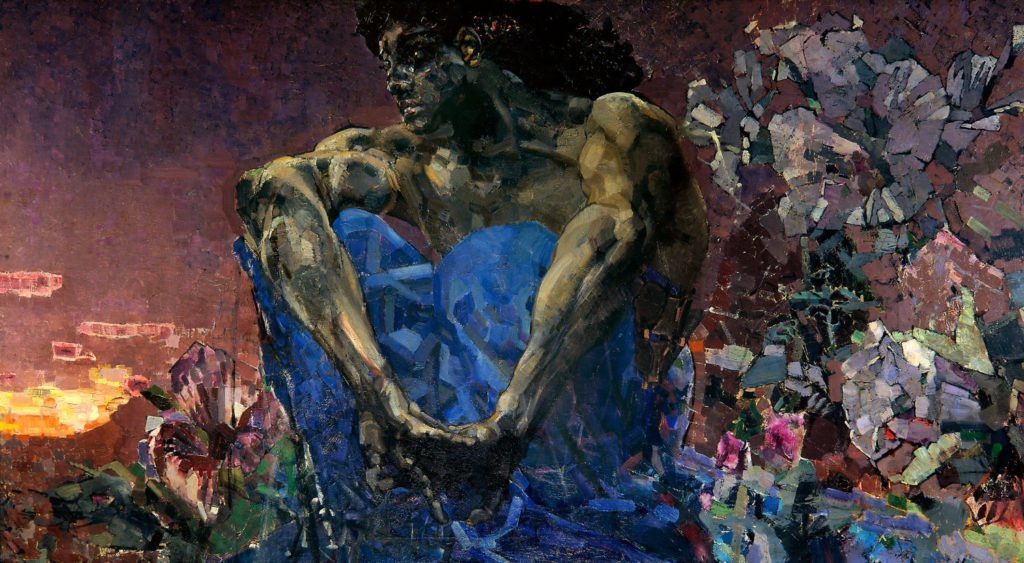Kyiv is a Capital of “Modernity”
 Read in Google News!
Read in Google News! 
Throughout its long history Kyiv experienced many ups and downs, from the early tenth century, when it was the capital of the Kyivan Principality, to our own times, when it became the capital of an independent Ukrainian state, writes historian Jean-Claude Marcadé for Harvard Ukrainian Studies.
It was not until the very end of the nineteenth century that the “gubernatorial center” of Kyiv once again began to play a role more prominent than that of a provincial capital. Between 1884 and 1889 Mikhail Vrubel´ worked in Kyiv; it was there that he completed his visionary frescoes in St. Cyril’s Church, prepared designs for painting the interiors of St. Volodymyr’s Cathedral that were never executed, and created drawings and studies for still lifes that proved to be influential for russian and Ukrainian art.
Under the influence of Byzantine art coupled with Venetian painting Vrubel´ transformed the heritage of Aleksandr Ivanov’s “Biblical Sketches” into a completely new synthesis which contained the seeds of the future achievements of “left art,” the so-called “avant-garde.” At the same time, he shattered the traditional canons of Orthodox icon painting.
During his Kyiv period Vrubel´ taught at the Kyiv Drawing School, which was founded amidst great difficulties by the Ukrainian realist painter Mykola Murashko. The school was financed by the entrepreneur and patron of the arts Ivan Tereshchenko. When Tereshchenko died in 1901, the Drawing School closed down, and was soon replaced by the Kyiv Art School in the capital. The genre painter Mykola Pymonenko (1862–1912), creator of idyllic paintings of Ukrainian peasant life, taught there until 1905. Among his pupils were Aristarkh Lentulov, Oleksandr Bohomazov, Aleksandra Exter, Abram Manevich, and Volodymyr Burliuk—that is, the leading representatives of the future avant-garde. In one of his autobiographies, Kazimir Malevich writes that he became acquainted with Pymonenko at the beginning of his career:
His paintings made a great impression on me. He showed me the painting Hopak. I was overwhelmed by everything I saw in his studio. There were a great many easels with paintings depicting the life of Ukraine.
I show him my own works, nature studies. I meet the Kyiv Art School.
We see no evidence that Malevich had any connection with the art works produced in the Kyiv Art School, but the influence of Pymonenko, even if not attested in Malevich’s output before 1905 (for which period there is no reliable information), is nevertheless obvious in Malevich’s postsuprematist works—for example, in The Reapers or Flower Girl from the State russian Museum. Here is what Malevich recounts about his impressions of the Ukrainian capital:
Every year a great fair was held in the city of Kyiv, which was attended by merchants from all over the world.…
I felt a great attraction for the city of Kyiv. I always had the sense that Kyiv was remarkable. Houses built out of colored bricks, the steep hills, the Dnieper, the distant horizon, steamboats. Everything about its life affected me more and more. Peasant women crossed the Dnieper in skiffs, bringing butter, milk, sour cream, filling the banks and streets of Kyiv, infusing it with special color.
Read more here.

